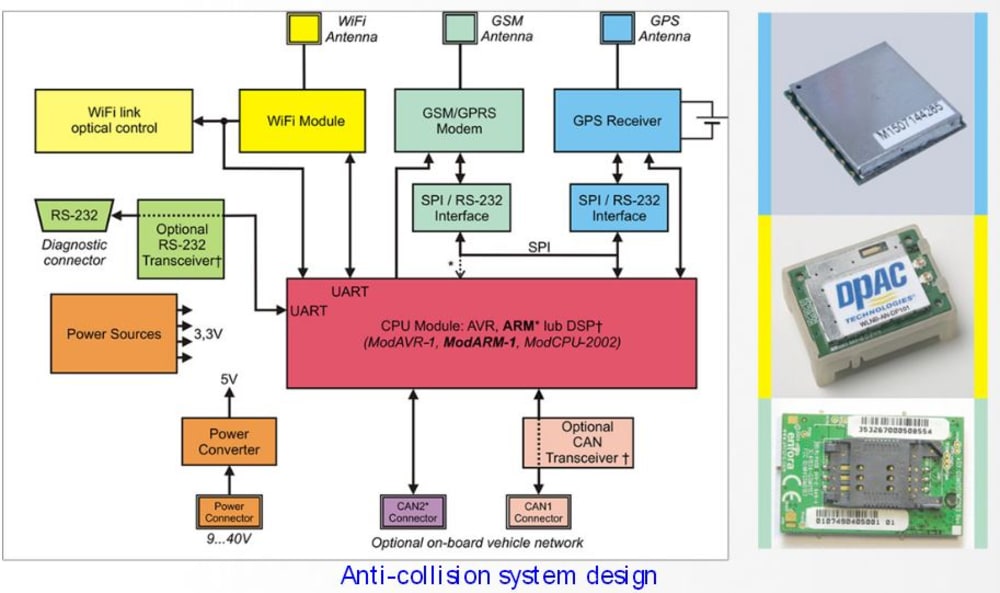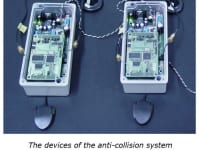The purpose of the anti-collision system is significant reduction a number of traction vehicles collisions, especially the collisions caused by hitting the rear of the preceding vehicle, which are often caused by the inattention of the driver.
The system is to help the driver by automatically generating warning about a chance of a collision; it can also initiate automatic braking.
The system is to be designed using distributed architecture, based on the specialized devices installed on all the traction vehicles.
A functionality of each device will include calculation of the current position, direction and speed and also communication for exchanging these data with other vehicles.
A GPS receiver will be used to determine the current position and movement parameters. The communication between vehicles will be accomplished using wireless WiFi (2,4 GHz) small range (200...500 m) communication.
The anti-collision device is to be equipped with GSM/GPRS modem for optional communication with central monitoring system server.
The anti-collision device will be broadcasting data related to its position through WiFi link, simultaneously receiving and analyzing the data from other vehicles within WiFi communication range.
The device software will control the communication tasks for GPS and WiFi modules and perform calculations necessary for collision situation analysis.
The remote monitoring function will allow for real time tracking of the current position and important movement parameters of the vehicle.
The monitored data are to be stored at the internet server database and can be accessed by authorized users using standard internet browser.
The anti-collision system can be used in urban traction vehicles - tramways, increasing the safety and reliability of the traffic and allowing for avoid the large costs of collision consequences.
The more sophisticated version of the system can be used at railways.
The system concept:
* each vehicle is equipped with anti-collision device calculating the position, direction and speed of the vehicle,
* the data exchange between devices is accomplished using wireless communication,
* the calculation and detection algorithms detect the possible danger of collision
* the warning of collision danger is generated for the driver,
* the devices can be equipped with remote monitoring option,
Data transmission
Monitoring application:
* all information acquired from vehicles is recorded at Internet server database,
* the database is accessed using any Internet browser,
* the data are visualized in dynamically generated WWW pages,
* free choice of parameters for visualization,
* text file export function (.csv format)
* vehicle trajectory presentation at a map
Main Work Packages of Development Project:
1. Selection of demonstration site at urban transport to install anti-collision systems,
2. Defining requirements for anti-collision systems for urban transport and for railways
3. Developing a model anti-collision systems for urban transport and laboratory tests
4. Developing a prototype of anti-collision systems for urban transport, installing it at a selected site and testing it.
5. Prototype demonstration activities
6. Developing a model anti-collision systems for railways and laboratory tests
7. Defining plans for further work on anti-collision systems for railways
Like this entry?
-
About the Entrant
- Name:Tomasz Rawinski
- Type of entry:teamTeam members:Arkadiusz Komkowski, Leszek Wolski
- Patent status:none








